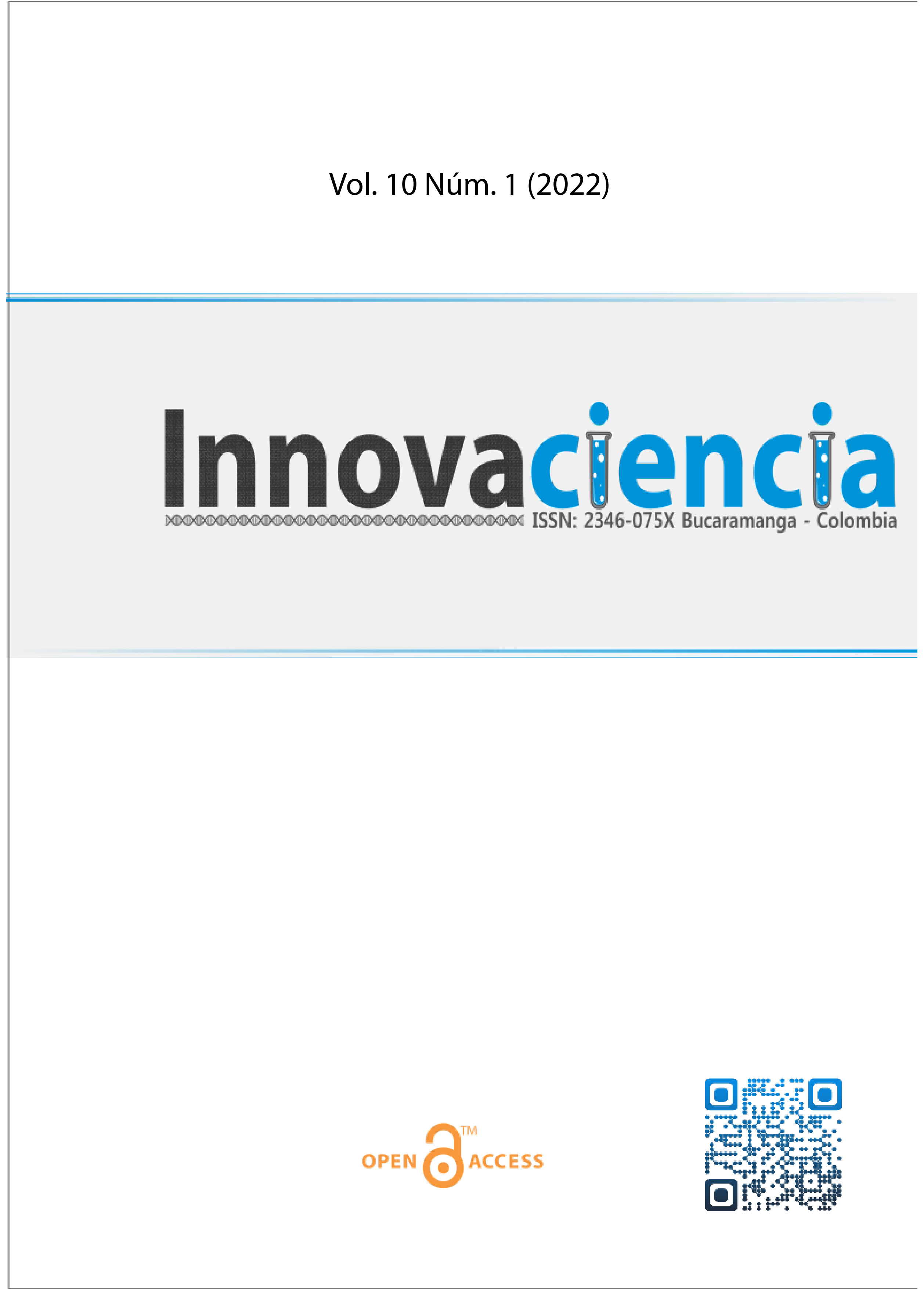Problems and prospects of the territorial development of the tourism system in the Almaty region
DOI:
https://doi.org/10.15649/2346075X.2962Palabras clave:
Sustainable Tourism, Tourism Resources, Tourism Preferences, Tourist Flow, Prospective Tourism TrendsResumen
Introduction: The tourism sector is recognized as an important sector of the economy of the Republic of Kazakhstan. As a member state of the UN, Kazakhstan integrates the Sustainable Development Goals (SDGs) into the State program for the development of the tourism industry. The incomplete implementation of the SDGs in Kazakhstan has causes of global and regional level. Materials and Methods: Statistical indicators for tourism in the Republic of Kazakhstan indicate a stable positive dynamics of the tourist flow in the country. The Almaty region has the highest rates of tourism activity, which has favorable historical, cultural and unique natural prerequisites. Results and Discussion: In the general tourist flow of the region, local tourism prevails. The indicator of inbound tourism in the Almaty region as a whole with the largest city of the Republic of Kazakhstan Almaty is the highest in the country. The target state setting for the prospective development of tourism assumes an increase in the share of tourism in the total GDP of the Republic of Kazakhstan by 2025 by 33%. Conclusions: In the study, in accordance with the concept of territorial and functional development of tourism and recreation in the Republic of Kazakhstan and the terminology of the urban planning direction, three key hierarchical levels of organization of tourist and recreational entities were formulated: regional, district, local – “tourist and recreational region”, “recreational agglomeration”, “tourist and recreational area”. The regional level corresponds to the Almaty tourist and recreational region, the recreational agglomeration - Taldykorgan and Almaty tourist and recreational agglomerations. Within the boundaries of the region, five tourist and recreational areas have been identified.
Referencias
Chigrinets AG, Mazur LP, Duskayev KK, Chigrinets LY, Akhmetova ST, Mussina AK. Evaluation and dynamics of the glacial runoff of the rivers of the Ile Alatau Northern Slope in the context of global warming. Int. J. Eng. Res. Technol. 2020. 12(8):1279-1277. https://doi.org/10.37624/IJERT/13.3.2020.419-426
Goh S, Yeoman IS. Intangible heritage, and future past of rural Vietnam: A hero's journey and creative place-making of Yen Tu's tourism. J. Tourism Futures. 2021. 7(2):216-225. https://doi.org/10.1108/JTF-12-2019-0147
Hristov M, Danilović Hristić N, Stefanović N. Impact of overtourism on urban life. Spatium. 2021. 45:59-66. https://doi.org/10.2298/SPAT2145059H
Unwto tourism data dashboard. 2022. Available at: https://www.unwto.org/tourism-data/unwto-tourism-dashboard. Accessed: August 25, 2022.
UNWTO. 2022. Available at: https://www.unwto.org. Accessed: August 25, 2022.
WTC. Travel & tourism continues strong growth above global GDP. 2022. Available at: https://wttc.org/Portals/0/Documents/EIR/EIR2022-global-infographic-2pager-080622.pdf?ver=2022- 06-14-183513-303. Accessed: April 17, 2022.
The Sustainable Development Goals Report 2022. 2022. Available at: https://unstats.un.org/sdgs/report/2022/The-Sustainable-Development-Goals-Report-2022.pdf. Accessed: April 21, 2022.
Kazakhstanconnection to the UN report on SDG meetings. 2019. Available at: https://online.zakon.kz/Document/?doc_id=37643340. Accessed: June 13, 2022.
Ferrer-Roca N, Weston R, Guia J, Mihalic T, Blasco D, Prats L, Lawler M, Jarratt D. Back to the future: challenges of European tourism of tomorrow. J. Tourism Futures. 2021. 7(2):184-191. https://doi.org/10.1108/JTF-10-2019-0114
Setiadi A, Rudwiarti LA, Priscilia F, Wardhani MK. City tourism branding resilience during the COVID-19 pandemic in Yogyakarta, Indonesia. Spatium. 2021. 45:1-8. https://doi.org/10.2298/SPAT2145001S
Gharibi N. The evolution of predictive models and tourism. J. Tourism Futures. 2021. 7(2):259-266. https://doi.org/10.1108/JTF-04-2020-0046
Wong BKM, Sa'aid Hazley SA. The future of health tourism in the industrial revolution 4.0 era. J. Tourism Futures. 2021. 7(2):267-272. https://doi.org/10.1108/JTF-01-2020-0006
Milijić S, Maksin M. Retrospective of and prospects for the development and strategic planning of tourism in the mountain regions of Serbia. Spatium. 2017. 37:42-48. https://doi.org/10.2298/SPAT1737042M
Decree of the Government of the Republic of Kazakhstan No 360 “On approval of the State program for the development of the tourism industry of the Republic of Kazakhstan for 2019-2025”. 2019. Available at: http://adilet.zan.kz/rus/docs/P1900000360. Accessed: June 13, 2022.
Scheme of the territorial-spatial organization of the recreational and tourist industry of the Almaty region. Almata: Urbostyle; 2021.
Information system for the collection and processing of statistical data in the field of tourism. 2022. Available at: https://tourstat.kz/. Accessed: July 10, 2022.
Zhang R, Qin L, Shang H, Yu S, Gou X, Mambetov BT, Bolatov K, Zheng W, Ainur U, Bolatova A. Climatic change in southern Kazakhstan since 1850 CE inferred from tree rings. Int. J. Biometeorol. 2020. 64(5):841-851. https://doi.org/10.1007/s00484-020-01873-5
Sansyzbayeva A, Saipov A, Dunets A, Mussagaliyeva A, Ramazan A. Geography of natural and recreational facilities in the development of economic integration of the border areas of northern Kazakhstan and the Russian Federation. Geojournal of Tourism & Geosites. 2021. 35(2):499-506. https://doi.org/10.30892/gtg.35230-677
Stefanović N, Hristić N, Srnić S. A methodological framework for integrated planning in the protection and development of natural resource areas in Serbia - A Case study of spatial plans for special purpose areas for protected natural areas. Spatium. 2018. 40:25-32. https://doi.org/10.2298/SPAT1840025S
Trišić I, Štetić S, Maksin M. The significance of protected natural areas for tourism in the Vojvodina Province (northern Serbia) – analysis of sustainable tourism development. Spatium. 2020. 43:1-7. https://doi.org/10.2298/SPAT2043001T
Descargas
Publicado
Cómo citar
Descargas
Número
Sección
Licencia
Todos los artículos publicados en esta revista científica están protegidos por los derechos de autor. Los autores retienen los derechos de autor y conceden a la revista el derecho de primera publicación con el trabajo simultáneamente licenciado bajo una Licencia Creative Commons Atribución-NoComercial 4.0 Internacional (CC BY-NC 4.0) que permite compartir el trabajo con reconocimiento de autoría y sin fines comerciales.
Los lectores pueden copiar y distribuir el material de este número de la revista para fines no comerciales en cualquier medio, siempre que se cite el trabajo original y se den crédito a los autores y a la revista.
Cualquier uso comercial del material de esta revista está estrictamente prohibido sin el permiso por escrito del titular de los derechos de autor.
Para obtener más información sobre los derechos de autor de la revista y las políticas de acceso abierto, por favor visite nuestro sitio web.
















